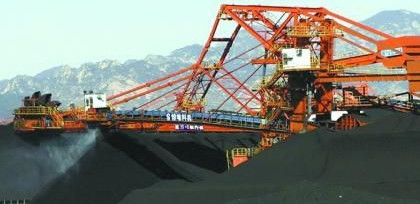Chemical News
-
International thermal coal market adjusts to China's changing dynamics
http://www.chemnet.com Apr 21,2016 Platts

Experts foresee the international thermal coal market entering a period of slower growth, after a period of break-neck expansion with the opening up of China and India to large volumes of imports.
Fabio Gabrieli, director of dry bulk analysis and strategy at Mercuria Energy Trading, said he did not expect to see any growth in seaborne market volumes, or any increase in total trade flows for thermal coal around the world in the near term.
But, he did envisage changes to trade flows for thermal coal globally that could displace tons from the Atlantic market into the Asia-Pacific trading area.
"Atlantic demand will keep on dropping, and there is nothing that can change this reality," said Gabrieli.
For example, the United Kingdom's annual demand for imported thermal coal has slumped to only 10 million mt from 44 million mt several years ago, as low gas prices encourage generators to switch from coal as an energy feedstock.
New areas of growth in the Asia-Pacific market, excluding China, are leading coal producers to focus on smaller south-east Asian countries such as Vietnam, Thailand and Malaysia.
"The Pacific market is where [marginal] demand will be, and could offset the drop from China," stated Gabrieli.
COLOMBIAN FLOWS EAST
At the head of these changing trade flows is Colombian thermal coal which has traditionally supplied the Atlantic market, including Europe.
"Colombian will be forced to move somewhere else because of a decline in European demand," he said.
Around 25 Capesize shipments were headed to customers in the Asia-Pacific market, assisted partly by an environment of extremely low freight rates, and widening price differentials between FOB Colombia and FOB South Africa.
"Colombian coal has the capacity to grow and to still make money at today's prices," said Gabrieli.
Indonesian thermal coal was experiencing rising domestic demand. While for Australia, there was a large question mark over the future of some of its major export projects, he said.
The average cost of production for Australian thermal coal miners was in the region of $40/mt, and producers had made great strides in tackling their cost bases after they ballooned in the mining boom.
South African thermal coal is facing a challenging time in the Chinese market, after some cargoes of this origin became snagged on China's trace elements tests for imported shipments.
As a result of this, Chinese buyers have become nervous about accepting Richards Bay shipments.
"China is not importing South African coal," said Gabrieli.
China generally had slowed its import demand over the past year based on factors such as its increased output from hydro-electricity projects, and its growing network of high voltage lines that criss-cross the country.
SLOWING CHINA
Slowing economic growth in China -- albeit running at a notional rate of 6.9% in 2015 -- has also acted as a drag on demand for thermal coal imports, said Chinese coal market experts at the conference.
"We have seen limited growth potential in the Chinese economy," said Li Haofeng, deputy director general at China's National Energy Administration, Beijing's energy policymaking agency.
"China's economy has entered a 'new normal,'" he said.
The slowdown had drastically affected China's energy sector, as had a rapid growth in renewable energy generation in the Asian country. "Technological advances and innovation especially in smart grid technology have driven a new wave of energy development," said Li.
This is not to understate the importance of coal to China's fuel generation mix for electricity, he said.
"China's coal consumption is still very high. Coal is an important pillar to guarantee China's energy security," said the NEA deputy director general.
Speaking about China's coal industry in the context of the government's five-year economic plan for 2016-2020, he said: "We need to press ahead with reforms in the coal industry."
Reforms were needed to tackle China's supply and demand imbalance in thermal coal, and the present soft market conditions were a good time to do this, he said.
"The correlation between supply and demand is relaxed, therefore we have more momentum to press ahead with restructuring of the coal industry," said Li.
"Supply [of coal] is sufficient and we are affected by oversupply," he added.
FIVE-YEAR PLAN
The Chinese central government's five-year plan has two main thrusts when it comes to the country's domestic coal industry.
Firstly, to accelerate the transformation of China's energy production. Secondly, to modernize the efficiency of China's energy generation industry.
The free market is to have an increased role in reforming China's energy sector to speed up the adoption of new technologies such as large-scale data management to increase the efficiency of energy production, he said.
Chinese energy companies will also be encouraged to "engage in international cooperation and trade," he said.
In the case of China's coal producers this essentially means growing their presence in international markets and "cooperating with coal-producing countries," said Li.
Bu Changsen, director general of the Shanxi Bureau of Coal Mine Safety Supervision, said China's domestic coal industry had experienced a difficult period since 2012 as it adjusted to lower prices and an over supplied market. Market conditions for domestic coal producers were about to get tougher, he believed.
He stated: "The coal industry is facing a very cold period. Winter for this industry will be a long and painful one." Print |
Print |  add to Favorites |
add to Favorites |  Close
Close


